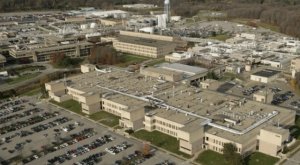
After selling its x86 server business to Lenovo, IBM is apparently considering another major shift in strategy and divesting its semiconductor manufacturing foundries as well. If it does so, it would be the end of an era. IBM hasn’t dominated semiconductor manufacturing in decades, but the technology that’s come out IBM’s laboratories has been instrumental in the advancement of CMOS design. IBM built the first computer capable of defeating a human in chess, the first carbon nanotube transistors, copper interconnects, and pioneered the use of silicon-on-insulator (SOI) technology, which was vital to AMD’s resurgence in the early 2000. The company has also done a great deal of research on cutting-edge semiconductor manufacturing and technology prototyping, including the use of graphene and the ramping up of III-V materials.
IBM doesn’t plan to stop manufacturing its Power-based processors — it simply wants to sell the plants to someone who would operate them, similar to how GlobalFoundries and AMD remain connected via contract despite being independent companies. On the other hand, the less-than-amazing performance of the GF-AMD partnership is proof that this kind of maneuver doesn’t always yield the dividends either company might wish for. When AMD spun GF off in 2009, the expectation and hope was for GlobalFoundries to quickly match TSMC’s 28nm ramp-up, capture a significant portion of the high-margin wins at 28nm, and then push forward to cut Intel’s two-year process lead. None of that happened.
IBM has two major foundries — a 300mm production facility (Building 323) in East Fishkill New York and an older production complex in Burlington, Vermont. The East Fishkill facility uses 300mm wafers and is building 22nm processors while the older Burlington facility may be split between 300mm and 200mm production. Reports differ on this last point.